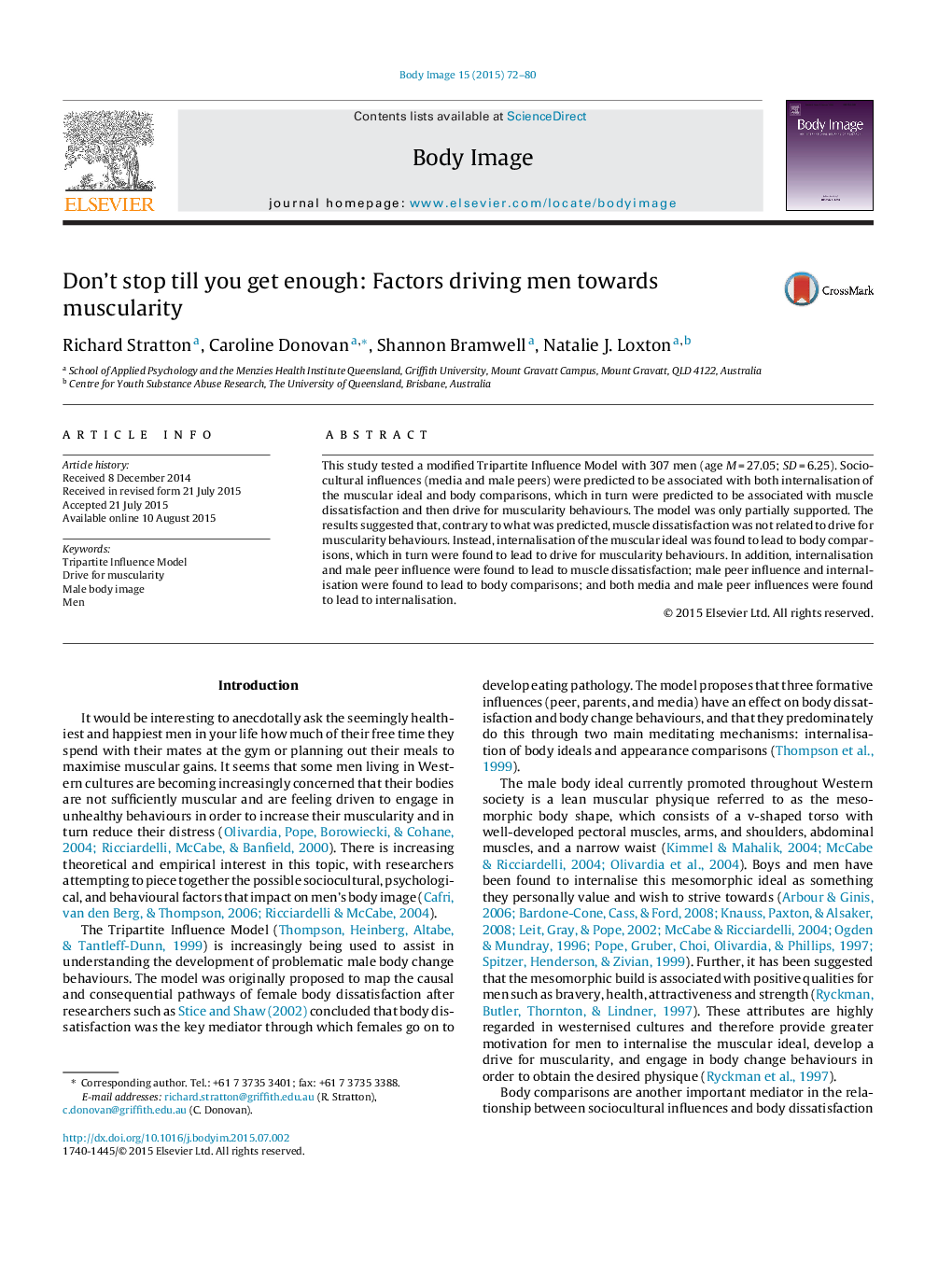| Article ID | Journal | Published Year | Pages | File Type |
|---|---|---|---|---|
| 902724 | Body Image | 2015 | 9 Pages |
•A version of the Tripartite Influence Model was tested with 307 men.•Structural equation modelling was used to test the model.•Internalisation and body comparisons may drive men towards muscle enhancing behaviours.•Male muscle dissatisfaction was not central to male drive for muscularity.
This study tested a modified Tripartite Influence Model with 307 men (age M = 27.05; SD = 6.25). Sociocultural influences (media and male peers) were predicted to be associated with both internalisation of the muscular ideal and body comparisons, which in turn were predicted to be associated with muscle dissatisfaction and then drive for muscularity behaviours. The model was only partially supported. The results suggested that, contrary to what was predicted, muscle dissatisfaction was not related to drive for muscularity behaviours. Instead, internalisation of the muscular ideal was found to lead to body comparisons, which in turn were found to lead to drive for muscularity behaviours. In addition, internalisation and male peer influence were found to lead to muscle dissatisfaction; male peer influence and internalisation were found to lead to body comparisons; and both media and male peer influences were found to lead to internalisation.
